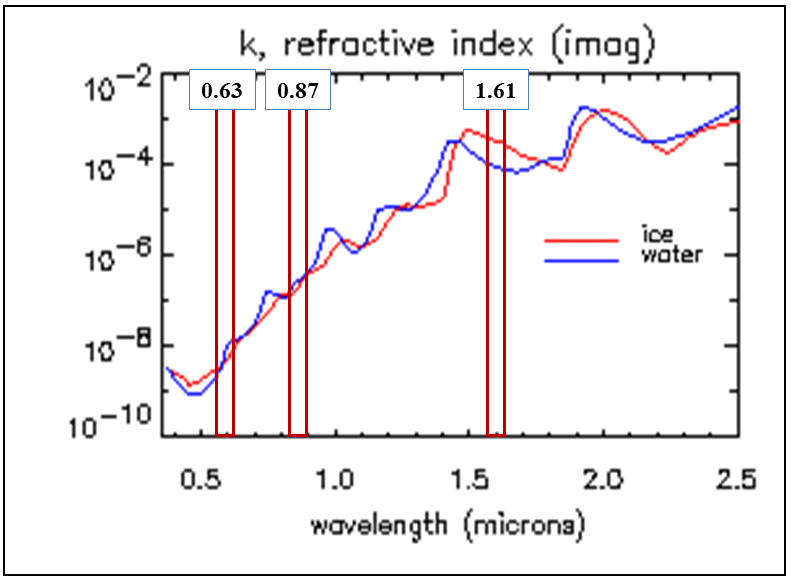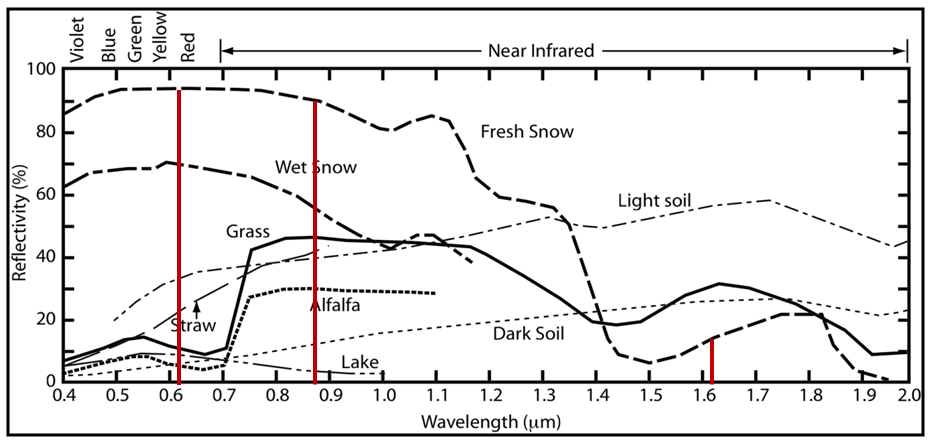Physical Basis
Distinguishing ice and water clouds
The NIR1.61 channel helps to discriminate between water clouds and ice clouds. Ice crystals absorb radiation more strongly than water particles in the NIR1.61 channel (Fig. 1).
Figure 1: Absorption spectra of water (blue curve) and ice (red curve)
Fig. 1 presents the imaginary refraction index of water and ice. This index characterizes the absorption of the material, not the absorption of a cloud layer. A cloud layer's absorption depends on many other things as well (like the number of droplets/particles etc.), but the absorption coefficient of the material has a dominant role. Due to the higher absorption of ice in the NIR1.61 channel the reflection of ice clouds is lower than that of water clouds. The typical reflectance of ice is about 30%, while that of water is about 60%. (Note that the difference between ice and water absorption is not small: it is shown on a logarithmic scale.) For the VIS0.63 and NIR0.87 channels the index is much lower and about the same for ice and water particles.
Distinguishing snow and fog or water clouds
The NIR1.61 channel helps to discriminate between snow-covered land and fog or low water clouds. NIR1.61 is the key channel of daytime snow detection. Fig. 2 presents the typical shortwave reflectivity spectra of some surface types, including snow. The snow's reflectivity is much higher in VIS0.63 and NIR0.87 than in NIR1.61 (see the brown vertical lines in Fig. 2). Snow is bright in VIS0.63 and NIR0.87 and dark in NIR1.61 images. Because water clouds reflect much of the radiation in all three channels (not shown in Fig. 2), they can be used in combination to distinguish snow from water clouds.
Figure 2: Typical shortwave reflectivity spectra of surface types
(Courtesy of Steve Ackerman, CIMSS)
Distinguishing cloud-free areas with different green vegetation fractions
The NIR0.87 and VIS0.63 channels together provide information on vegetation. The reason is demonstrated in Fig. 3: the reflectivity of green vegetation differs considerably between the two channels. More green in the Natural Color RGB means that the pixel is covered by vegetation containing more chlorophyll.
Figure 3: Typical reflectivity functions of green vegetation and bare soil (green and brown curves) in the shortwave spectral region


